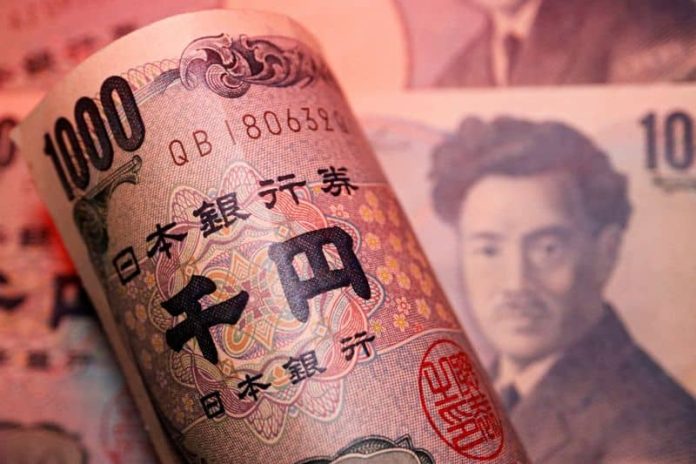By Rae Wee
SINGAPORE (Reuters) – Mounting concerns over China’s sputtering economy knocked the Australian dollar and the yuan to nine-month lows on Wednesday, while the dollar held broadly steady, underpinned by a resilient U.S. economy.
The yen floundered inside a key intervention zone that kept traders on guard, while sterling settled slightly higher after data on Wednesday showed British annual consumer price inflation slowed to 6.8% in July.
The pound initially rose more than 0.2% in the immediate aftermath of the data release, though later pared those gains and was last 0.04% higher at $1.27075.
With inflation still running far above the Bank of England’s 2% target, chances are that the central bank has further to go in raising rates even at the risk of hurting growth.
In Asia, the yuan tumbled to its lowest level since November in both the onshore and offshore markets, falling as low as 7.2989 per dollar and hitting a trough of 7.3379, respectively..
That extended Tuesday’s decline following a slew of Chinese data that missed forecasts and prompted Beijing to deliver unexpected cuts to its key policy rates as authorities there raced to shore up an economy that has rapidly lost steam in recent months.
In contrast, the dollar was on the front foot after U.S. retail sales surpassed expectations in July, underscoring its economic resilience and strengthening the case for the Federal Reserve to keep rates higher for longer.
The China gloom similarly saw the Australian and New Zealand dollars, often used as liquid proxies for the yuan, plumbing nine-month lows.
“Seeing is believing. The markets still want to see much more tangible evidence of not just monetary, but fiscal support coming through to revive growth (in China),” said Ray Attrill, head of FX strategy at National Australia Bank (OTC:NABZY).
“Until they see any evidence of that, they’re still going to take the view that not enough is being done or that China isn’t sufficiently serious about bolstering growth to really bring about a meaningful shift in sentiment,” he adding, expecting downward pressure to persist on the Aussie or the kiwi for now.
The Aussie slid roughly 0.4% to $0.64285, while the kiwi fell to a low of $0.5932 in early Asia trade.
It was last 0.34% higher at $0.5971, drawing support from a slightly hawkish tone from the Reserve Bank of New Zealand (RBNZ). The RBNZ held its cash rate steady as expected on Wednesday, but slightly pushed out when it expects to start cutting borrowing costs to 2025.
The dollar index was off 0.08% to 103.12, though was not far from an over one-month peak hit on Monday, thanks to higher yields in the wake of upbeat data.
The benchmark 10-year U.S. Treasury yield remained elevated on Wednesday and was last at 4.1934%, having jumped to its highest since October at 4.2740% on Tuesday.
The two-year Treasury yield last stood at 4.9205%.
The euro gained 0.11% to $1.09155, while sterling rose 0.02% to $1.27045.
Elsewhere, a sliding yen also kept traders on intervention watch, with the currency having hit the key 145 per dollar level for four sessions now, a zone which triggered heavy dollar selling by Japanese authorities in September and October of last year.
“Markets are likely on the edge as they stay wary of any actions from the Ministry of Finance (MOF) and the (Bank of Japan),” said Maybank analysts in a note.
Policymakers have not been as vociferous as they have been last year in their rhetoric against defending a weakening yen, with Finance Minister Shunichi Suzuki saying on Tuesday that authorities are not targeting absolute currency levels for intervention.



















